Love Wes Anderson's Films? Chances Are These 7 Studios Will Capture Your Interior Design Style Perfectly
Opulent, whimsical, and always enviable, the American director's sets transport viewers to a more beautiful world. We've collated a list of designers bringing a similar cinematic presence to their projects
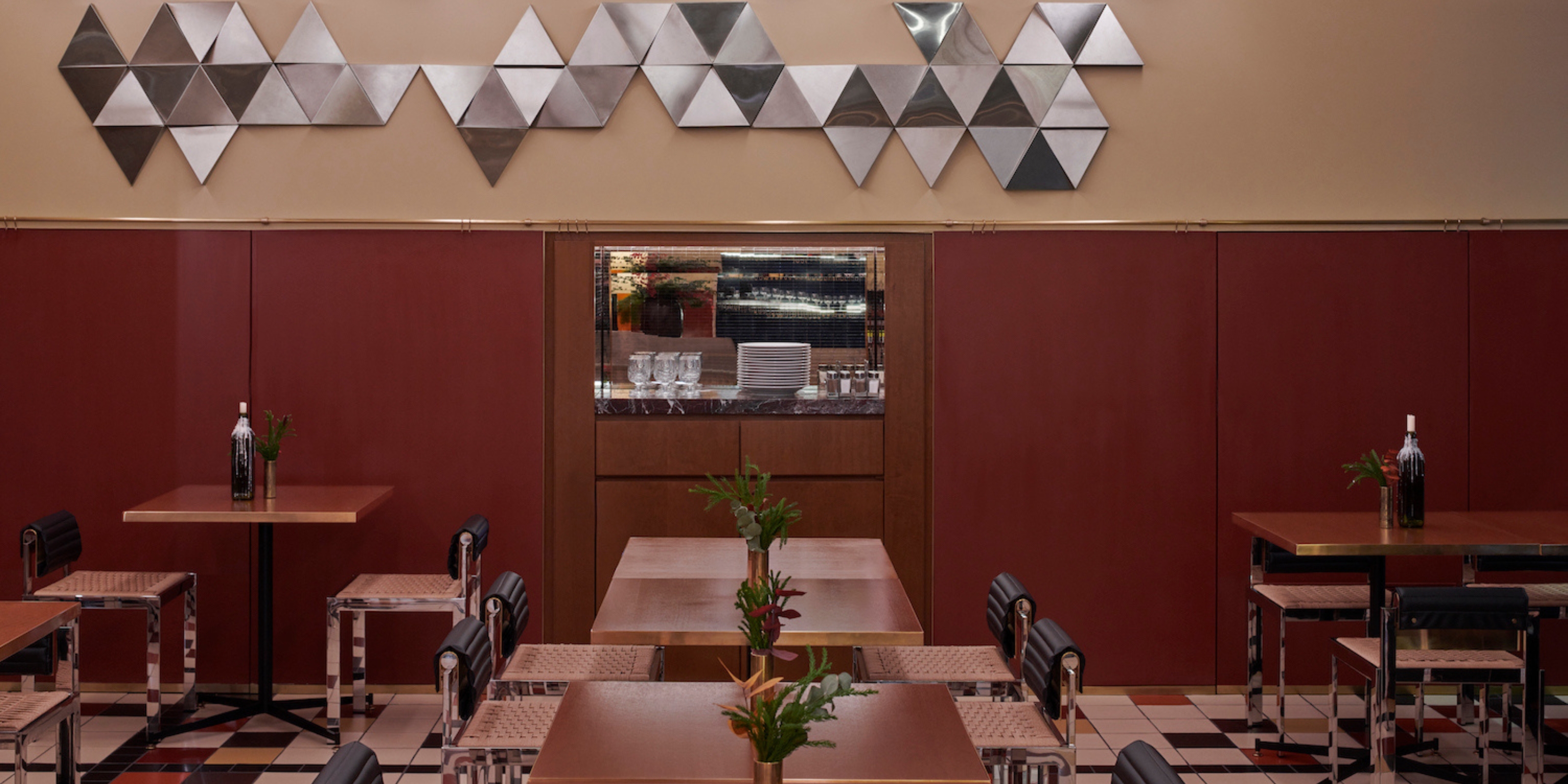
Wes Anderson's films are a feast for the eyes, full of carefully crafted, hyper-symmetrical compositions, alluring color palettes, and an evangelical attention to detail. If on the big screen, part of the merit goes to his long-term production designer and collaborator, Adam Stockhausen, who worked with him on many of his most critically acclaimed films, including Moonrise Kingdom, The Grand Budapest Hotel, and Isle of Dogs. In real life, the director has already demonstrated to be an interior design mind in his own right, as shown by the stunning train carriage he conceived in 2021 for Belmond.
With the help of our editors at Livingetc, I have collated a list of seven designers with the 'Accidentally Wes Anderson' touch. Each embodies traits of the director's iconic style, from symmetry and bold color schemes to hints of retro, luxury materials, and theatrical pizazz. So if you are obsessed with Wes Anderson interiors and desperate to step into one of his intricate plots vicariously through decor, know you have to search no further than the studios below.
1. Dimorestudio
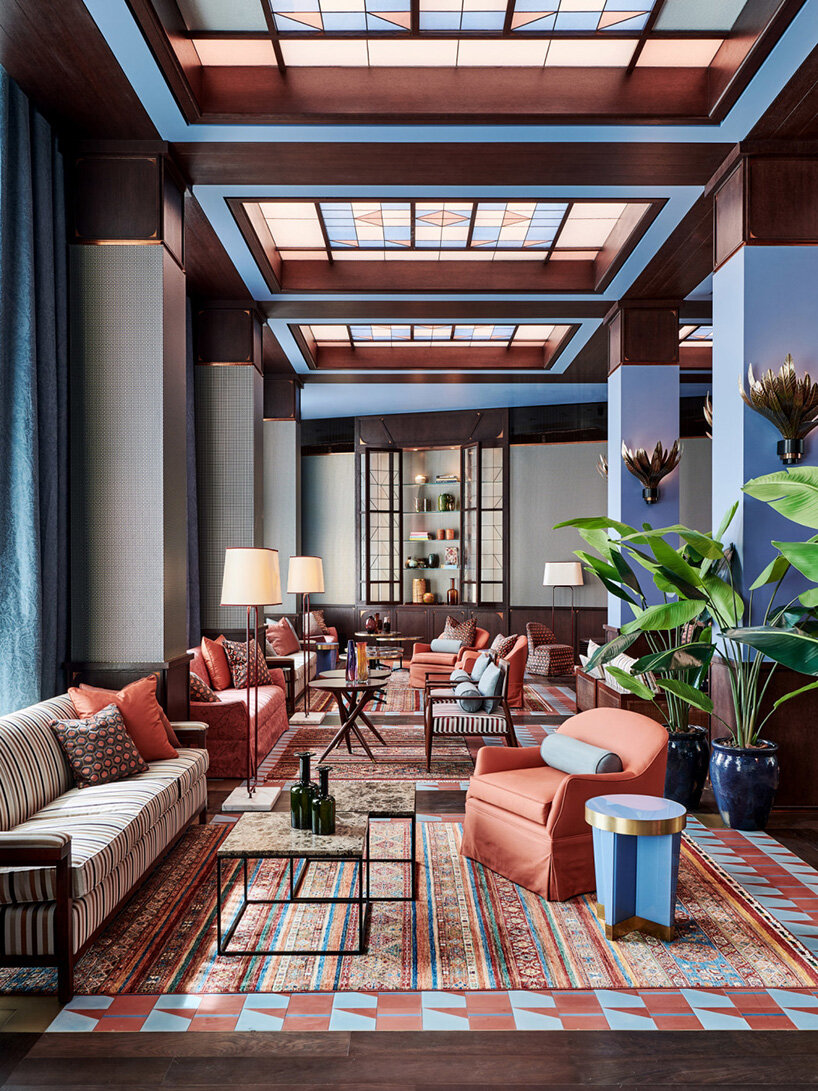

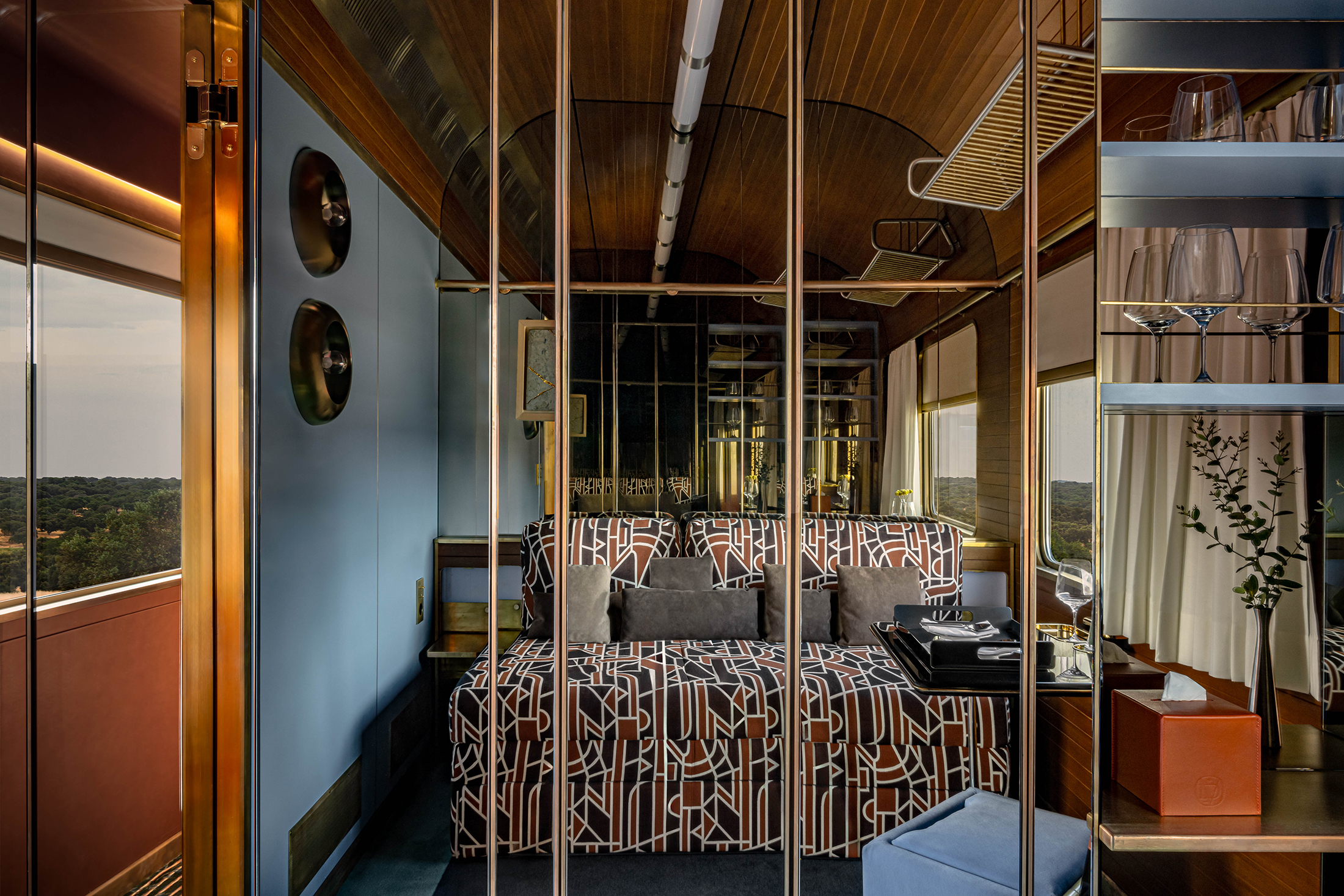
Lacquered floors, bold colors, and beautiful framing give the projects of Milanese designers Dimorestudio a stunning Wes Anderson feel. In their interiors for the Dubai Arts Club, the soft salmon furnishings and foliage set off a strong square framing — proportions that lean right into the filmmaker's inclination for clean, compartmentalized set designs.
The color palette of light blue and brown, with brighter tones of coral, cream, and green, hits the Wes Anderson-style interiors' mix of unexpected, sophisticated, and playful, while the rich mahogany echoes the nostalgic sepia look of Anderson's 2012 comedy Moonrise Kingdom.
2. India Mahdavi

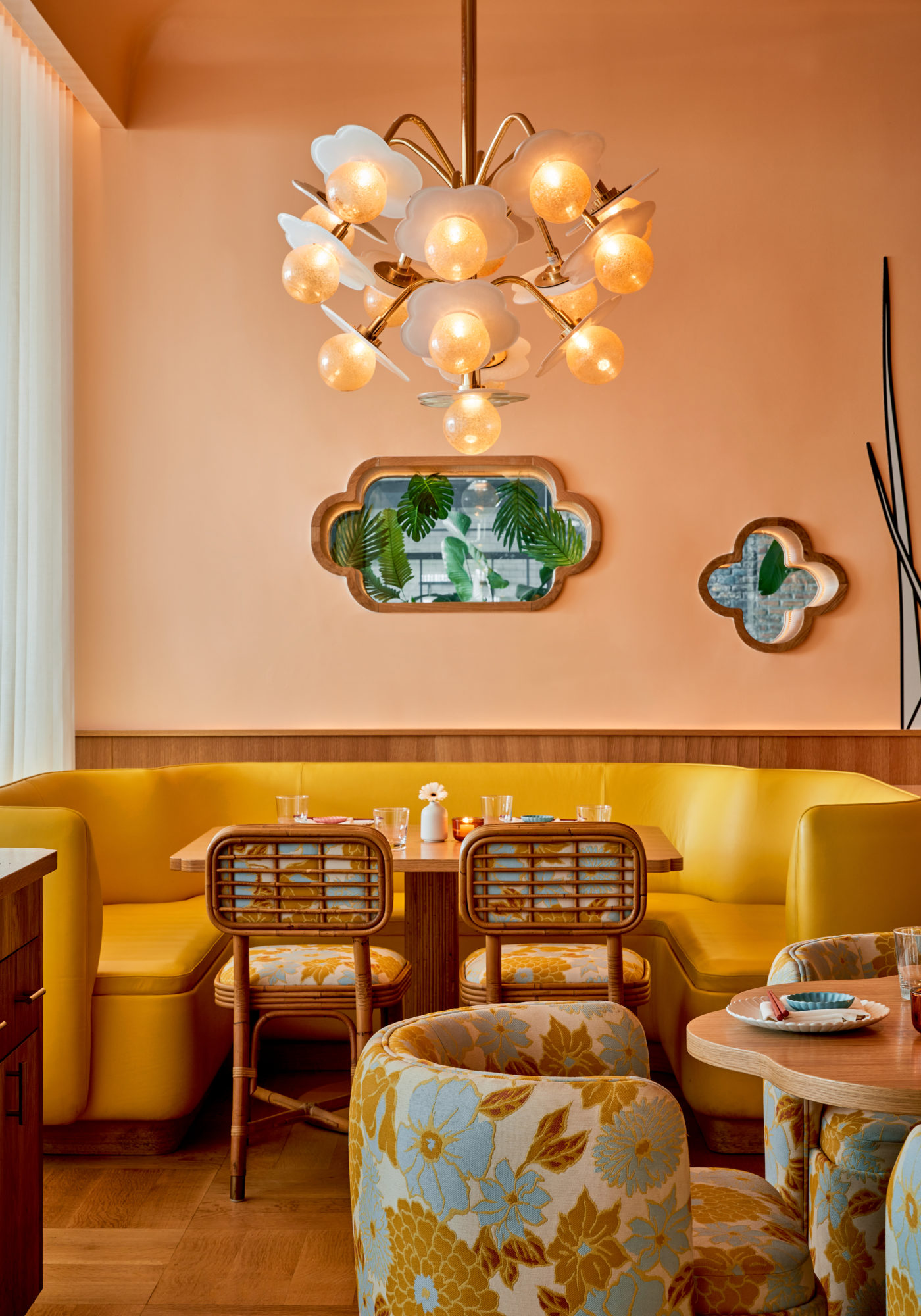
Every one of Iranian-French architect India Mahdavi's restaurant designs is camera-ready for a Wes Anderson shoot. In Miami, her Makoto dining space is filled with warm coral-pink, saffron, and sandalwood colors, bathing the space in a sunshine glow.
A glut of steel pendant lights reflects off the glossy fir wood tables and ceiling, a shine which contrasts beautifully with the nostalgic 1930s' style woven-back wood chairs. The sharp demarcation of space through the low-backed sofas and chairs, and then again with the top of the window, that splits the room into horizontal thirds, is a feature worthy of Wes Anderson-style interiors.
3. Dorothée Meilichzon
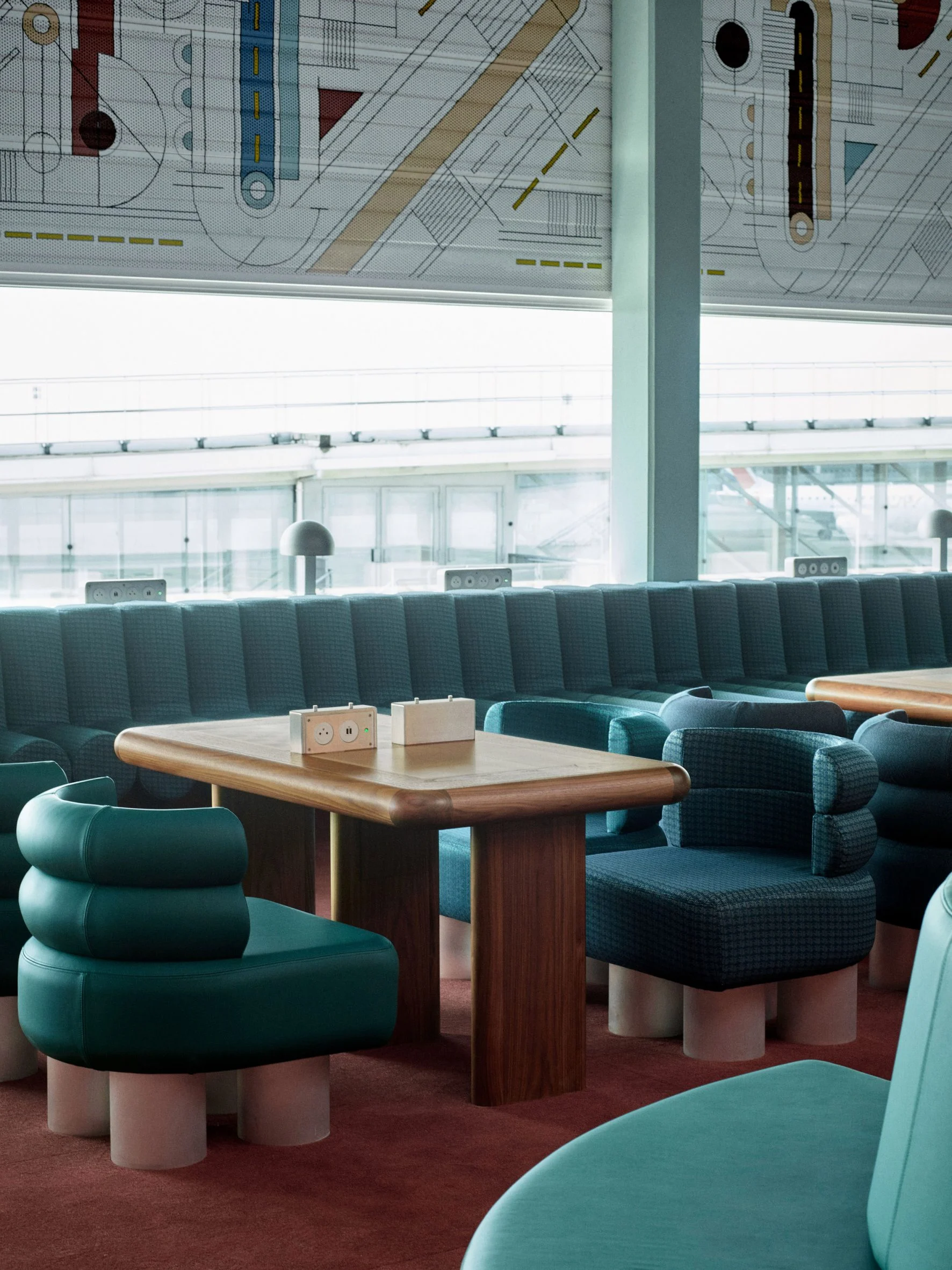

If Wes Anderson ever required an airport waiting room for filming, Terminal 2G at Aéroport Roissy Charles de Gaulle in Paris would be a strong contender. The brainchild of Parisian designer Dorothée Meilichzon, the quirky design of the tubular chairs and curved-edge tables is both retro and modern, and the strength of the color palette is right up Wes Anderson's alley.
Meilichzon's design of the Brass Restaurant, also in Paris, is swimming in Wes Anderson interiors-like details, including geometric mosaic flooring, glossy lacquers, mirrors, and symmetry plays. It also captures the warm, welcoming, retro yet elegant feel of The Grand Budapest Hotel. The interior designer's scope doesn't end in the French capital. Check out our recent curation of the best hotels in Venice to find out more.
4. Fabrizio Casiraghi
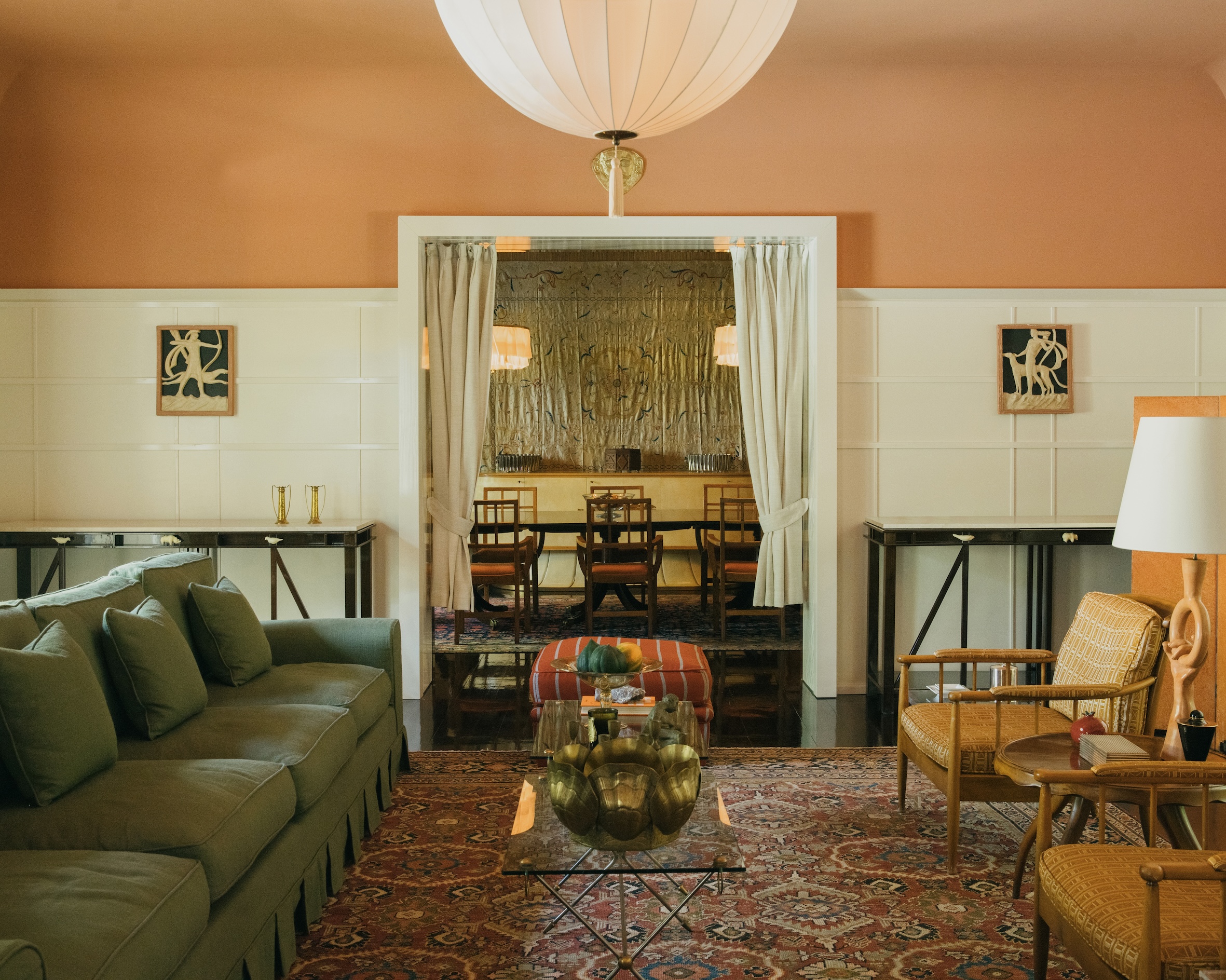
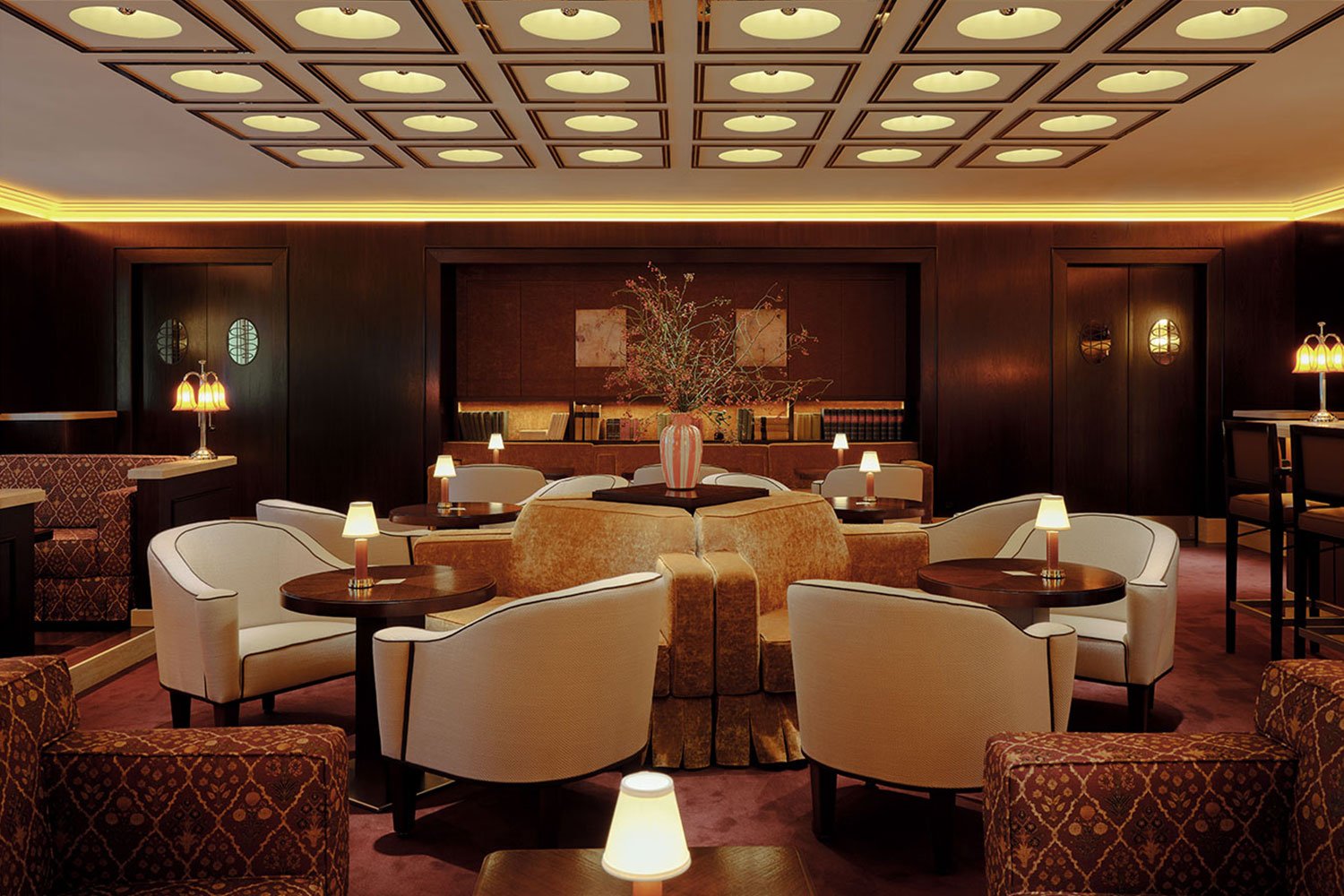
One of the latest projects by Italian interior designer Fabrizio Casiraghi, The Wilde, a private members' club boasting one of the most suggestive bars in Milan, exudes a classy Art Deco charm made even more timeless by bold details and a meticulously curated selection of accessories. The striking outlines on the ceiling of the dining room emphasize the almost-perfect symmetry of the space. Miniature lamps, set as props, glow atop rich American walnut tables in a salmon and cream-windowed room.
It is a setting that lends itself naturally to the absorbing plots of Wes Anderson's cinematography, but this isn't the only storytelling-led project by Casiraghi. The interiors of the Miami private residence he completed in July 2024, for example, would be more than suited for the director's filming. Woodland ceiling frescoes and draped curtains in archways bring a sense of surreal whimsy, whilst in the inner courtyard, huge leafy plants and exaggerated stripes across the ceiling are paired with a demurely funky set of 1940s French chairs.
5. Luca Guadagnino

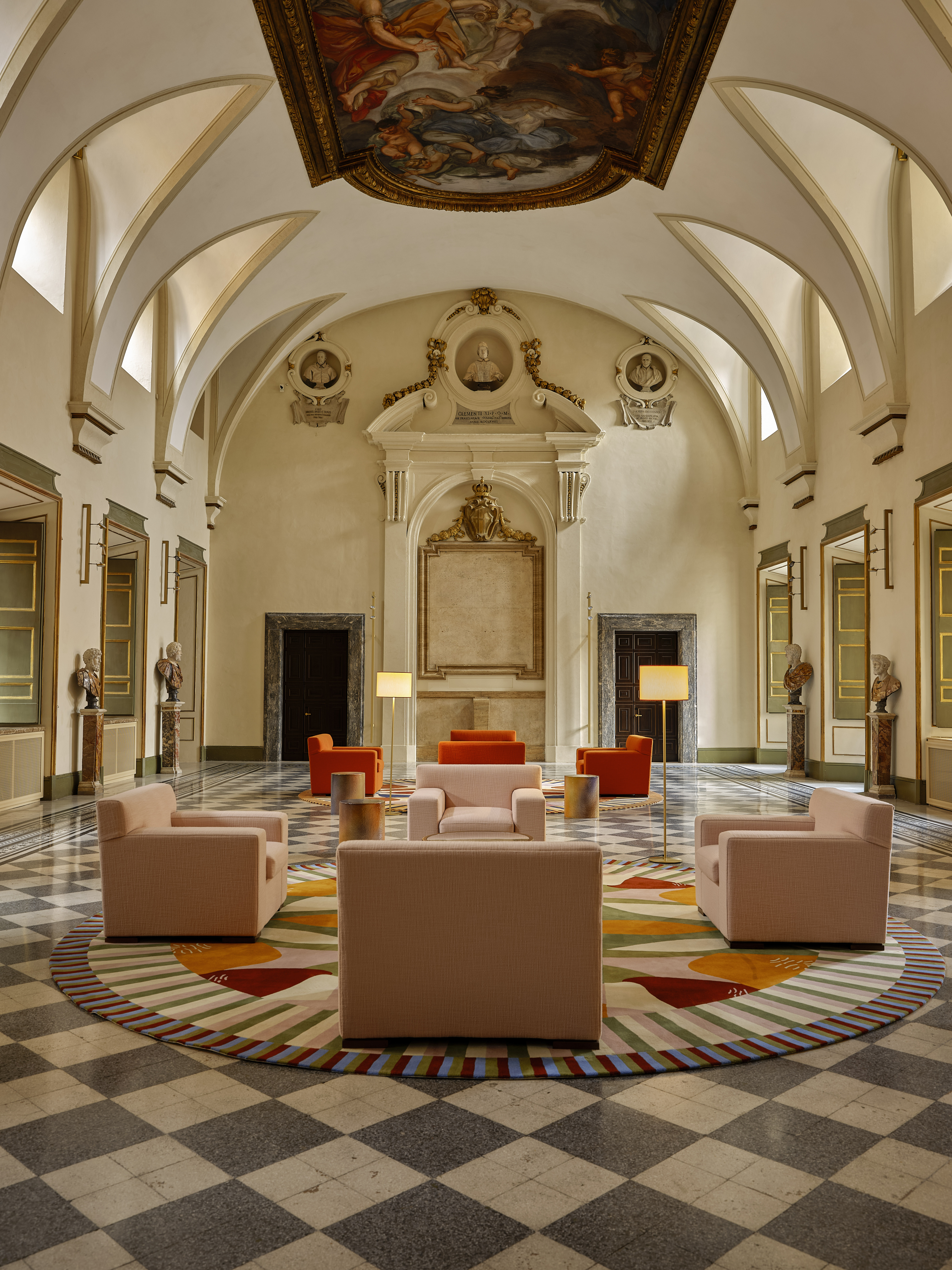
After confessing in an interview that his secret desire was to be an interior designer, the Call Me By Your Name director was commissioned by an intrigued reader to design their Lake Como mansion. Nearly a decade later, he owns a design studio, studiolucaguadagnino, and has breathed new life into Venetian villas and 16th-century Roman palazzos.
Attention to color and craftsmanship runs throughout his designs. In his first project, the kitchen was entirely awash in shades of lime, reminiscent of Wes Anderson's love of single-color spaces like the iconic buttercup yellow bedroom in Hotel Chevalier.
At Palazzo Talìa, Guadagnino's hotel design debut, which opened its doors to the public last year, the custom tiling, geometric floor designs, and the pleasing contrast of old and modern elements. It feels as if a spotlessly smart-dressed Ralph Fiennes might breeze through any time.
6. Masquespacio
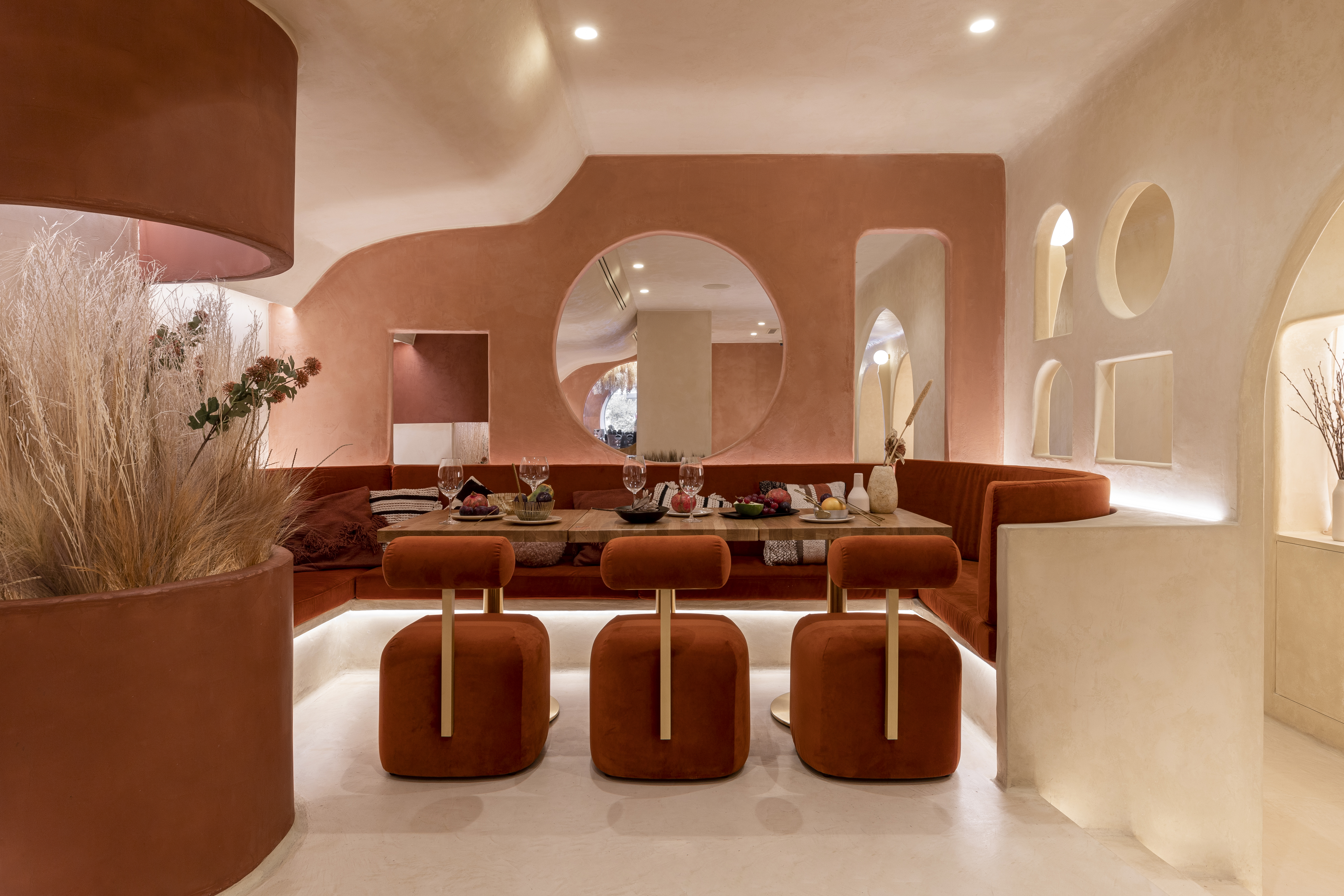
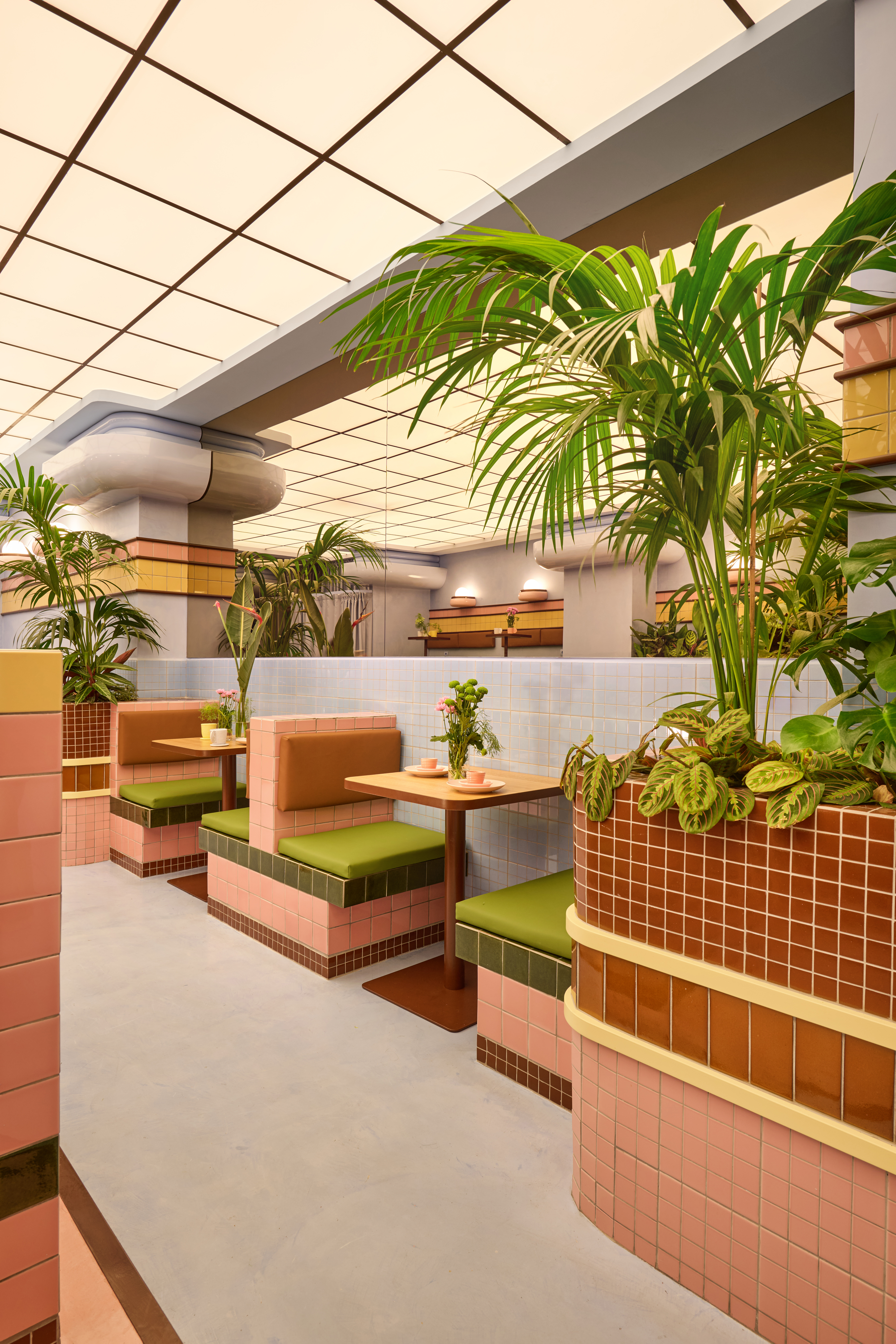
Moss green and salmon pink tiling with soft chocolate seat pads, all in Art Deco squares and curves, render the Barcelonian gelato cafe captured above, a project by Spanish studio Masquespacio, irresistibly Wes Anderson-coded. The ice-cream pastels — a favorite of the director — bring a feminine freshness to the geometric seating structure, while the destination's aesthetically pleasing architecture evokes The Grand Budapest Hotel's set design.
The organic, desert-inspired restaurant design of the firm's Living Bakkali in Valencia, meanwhile, continues the pastel palette associated with the filmmaker. The ivory, salmon pink, and rust red split the space into clean visual proportions, and the staggering of shapes in ascending height across the back wall, with the triplicate of chairs, is similar to Wes Anderson's recurring play of ascending shapes and groups of three.
7. AvroKO
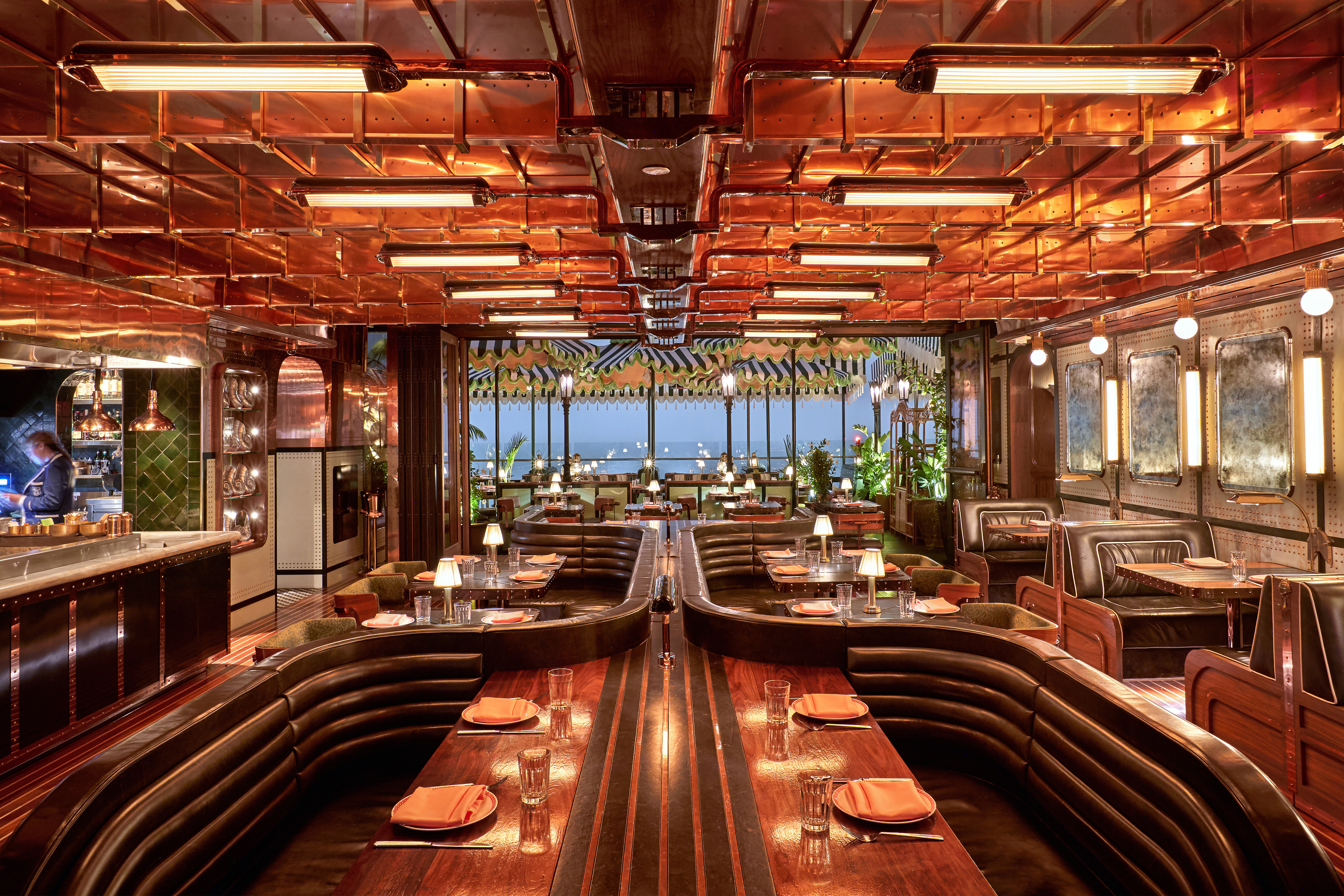


Ostentatious luxury and a flair for the theatrical are trademarks of both Wes Anderson's fictional residences and the nautical-themed interiors of the Reading Club & Seneca, a rooftop restaurant in San Diego. The retro bars of light glint off the copper metalwork and rich wood tables, and the booth seating oozes a mid-century modern aesthetic, characterized by clean lines, smooth curves, and warm wood tones.
Design studio AvroKO built in a multitude of details which wink to the restaurant's nautical inspiration. Inlaid copper strips use flag semaphore to spell out secret messages when tables are arranged a certain way, and the textured holophane glass mimics the refraction of light on board ships, allegedly. Details like this would doubtless be appreciated by the fastidious director.
Bedecked entirely in red velvet, the Twelve Thirty Club in Nashville, another commission completed by the New York-based studio, is ready for a night of unabashed entertainment. The monochrome room and perfect symmetry of the chairs are favourites of Wes Anderson, and the glitzy 1920s feel extends to the symmetrical, deep green, and burnished copper bar.
Wes Anderson isn't the only one to have given the Golden Age of rail travel a riveting, stylish upgrade. So if you are seeking more transportative interior inspiration (pun intended) after this deep dive into Wes Anderson-style interiors, simply glance at Dimorestudio's decor for La Dolce Vita Orient Express, one of the most sought-after luxury train rides of the hour, and let us know your thoughts.
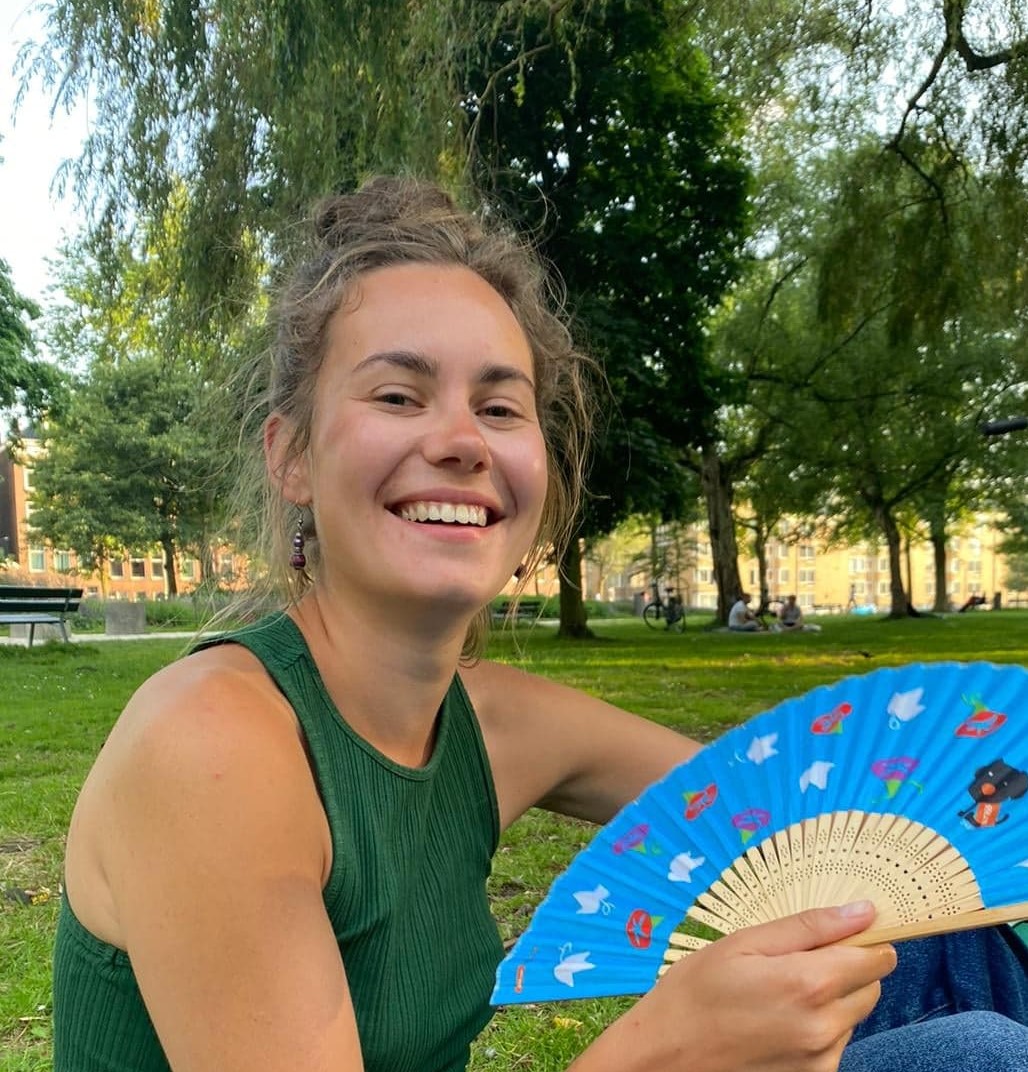
Leah Renz is a freelance lifestyle writer for Livingetc. She has written features for the Financial Times, and reviewed the buzziest food, opera, and art exhibitions for London Unattached. Her keen eye for design has manifested in photography, graphic design, and social media video creation in a marketing role before pursuing journalism full-time. Outside of work, Leah's love of writing extends into fiction too; her first short story centers on an increasingly unhinged ex-maths professor, and her second is a murder-mystery spoof.

